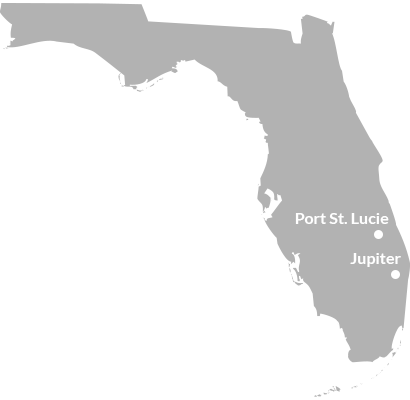What Do Termites Look Like
There are three species of termite that make up the majority of U.S. infestations. These are the Eastern subterranean termite, Formosan termite, and dry wood termite.
Eastern Subterranean Termite
The Eastern subterranean termite is the single largest species of pest termite in the U.S. They live in large colonies under the ground and can be found in every U.S. state but Alaska. Most members of a termite colony will be workers. They grow to about 3/8 of an inch long. A good way to tell them apart from other termite species is their large rectangular head and powerful jaws. Eastern Termites live in moist, dark areas and devour structural wood from the inside out. Their colonies are distinguished by small mud tubes.
Termite Formosan Termite
The Formosan termite is not native to the U.S. but was accidentally imported through trade with Asia. Formosan soldiers grow to about 1/2 an inch in length and have a dark oval-shaped head. Formosan’s are one of the most destructive species of termites. This is mostly due to the large size of their colonies. They usually contain well over a million termites.
Dry wood Termite
There are significant differences between dry wood termites and the other species on this list. Dry wood termites don’t live underground. They actually inhabit the interior pieces of dried lumber, hence their name. Dry wood termites are found throughout the American Southeast and Southwest. They vary in size from 1/4 to 3/8 of an inch long and have more rounded bodies. These can be especially damaging to wooden frame houses because the entire colony lives inside the wood of your home. Dry wood termites can be more difficult to identify than other termite species. This is mainly because they don’t form exterior colonies. Most Dry wood infestations aren’t spotted until after they begin eating structural wood.
Signs of Termite Damage
If your home hasn’t recently been inspected for termites you should keep your eyes open for termite signs. If you notice any of the following things, contact an exterminator immediately to get a full evaluation.
Swarming Termites
Termites reproduce through swarming. When a termite colony reaches maturity it will sometimes send off swarmers to found a new one. These are flying termites called swarmers. If you see a termite with wings you’re either very lucky or very unlucky. If the swarm has just arrived at your home you caught the infestation early. If they’re leaving your home you, unfortunately, have a mature colony somewhere on your property. Either way, any sighting of a termite swarm should be reported to your pest control company immediately. It’s important that they do a full inspection and put out protective countermeasures.
Discarded Wings
Termite swarmers have a pair of equal sized wings. Once they have found a mate and landed at a new colony location they shed their wings and begin producing workers and soldiers. If you notice a small pile of insect wings on or near your home it’s time to call in a professional. They will often be located on damp ground near a source of wood or on windowsills or doorframes. This depends on the species of termite and the weather conditions.
Wood Colored Droppings – Frass
Termite droppings or frass resemble tiny bits of dried wood. It can look like a pile of very fine sawdust. If you notice anything that looks like sawdust and you haven’t been working with wood it’s a bad sign. These will often show up on the exterior of your home near wood siding and other wood areas. Depending on where the swarm has traveled they can also be inside your home.
Mud Tubes
Subterranean termites don’t actually live inside your home. They dig nests under the ground and make tiny tunnels that carry them to a food source. A sign of subterranean termite colonies is the presence of these built up tubes on the foundation of your home. They will often look like a dirt straw pressed up against brick, concrete or other material.
When to Call the Experts
When dealing with termites it’s always better to play it safe. If you think you see termites or signs of termite damage, get a professional out as soon as possible. Untreated termite infestations can eat your home from the inside out. Termite damaged wood must be replaced, especially in structural areas. Their underground nests can actually sometimes penetrate the foundation of your home. The basic rule of thumb is to always err on the side of caution where termites are concerned.
Termite Prevention
Benjamin Franklin once said that an ounce of prevention is worth a pound of cure. Nowhere is this truer than with termites. By the time you notice termite damage, you’ll likely be looking at a very expensive repair bill. If you live in an area with known termite populations you should take precautions. Make sure to have an annual termite inspection performed. Anytime you’re thinking about buying a home make sure you get a recent termite inspection certificate. Discovering your new family home is infested with termites is not a great housewarming present. One of the most common ways to prevent termite infestations is with bait stations. These are small inspection points set up around your home that allow you to check for signs of termites. If any are caught the bait is replaced with a type of poison they then carry back to their colony.
Keep Your Home Termite Free
Now you can identify the most common types of American termites and the signs of their presence. You’ll be ready to answer your neighbor or friend when they ask what do termites look like. If you would like to learn more about termites and termite prevention, contact us for a free consultation.


